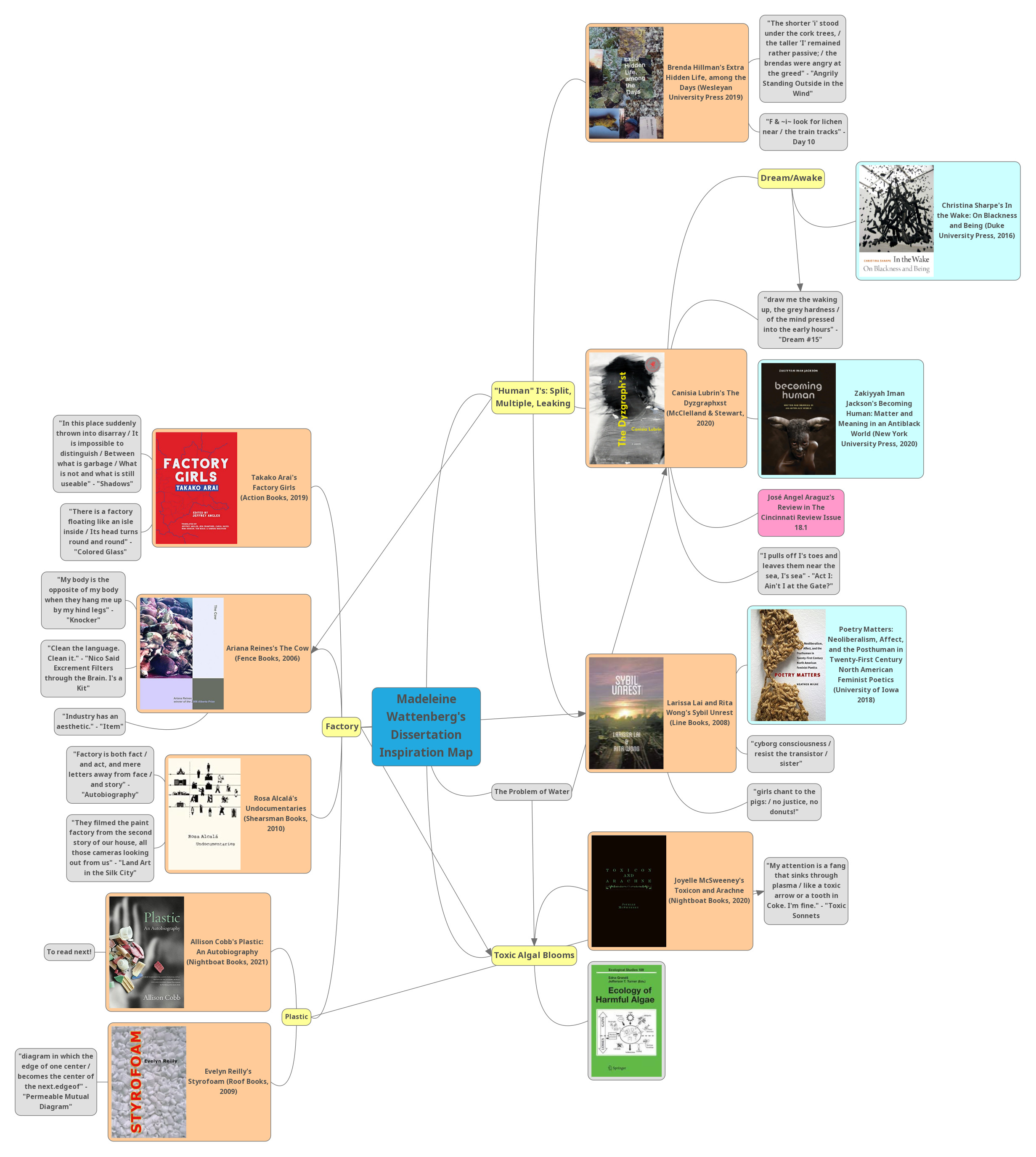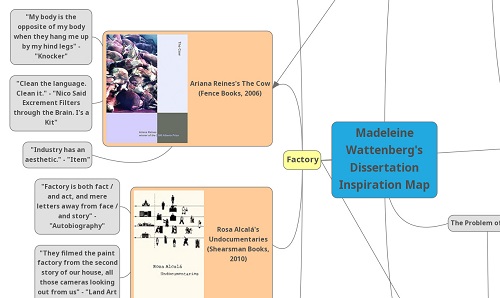Associate Editor Madeleine Wattenberg: As I’ve been working on my creative dissertation (a poetry collection that traces connections between industrial farming, toxic algal blooms, and a woman dreaming alone in her urban apartment), I’ve been thinking about the way the work of inspiration disappears in the poetry-production process. Epigraphs and robust note sections can cite specific sources, but often much of the reading behind the writing remains unnamed. “Inspiration,” which at its Latin roots is derived from “breath,” becomes a hidden gesture rather than an intentional practice. My manuscript is emerging within a large ecosystem of images and texts, but how can I make this inspiration system more visible to myself and to others?
One way to make inspiration visible outside the poems is to visually map connections between sources. I’m reading books that examine factories and modes of production, employ typographical disturbances to the lyric “I,” and probe the limits of dreamspace. These books soon lead me to other sources.
Below is an incomplete version of my inspiration map. As I created it, arrows and lines quickly intersected—no book offers just one thing, and nodes focusing on content and craft appear on a leaky continuum.
There are a number of programs that you can use to create your own map. I created mine using MindMup, but you can also use Microsoft Word graphs, Miro Mind Maps, graph by hand, or any other number of options that make sense for your brain. Creating a map has helped me better understand the relationships between my work and the work of others—and become more intentional in acknowledging the sources of oxygen and breath that animate my writing.
(To view the image below in more detail: on a desktop computer, right-click on the map and choose “Open Image in New Tab.” On a touch-sensitive screen, hold your finger on the image and choose “Preview image.”)

Madeleine Wattenberg is the author of I/O (University of Arkansas Press 2021). Her work appears in places such as Salamander Magazine, The Rumpus, Puerto del Sol, sixth finch, Poetry Daily, and Best New Poets. She is a PhD candidate at the University of Cincinnati and serves as associate editor for the Cincinnati Review.








